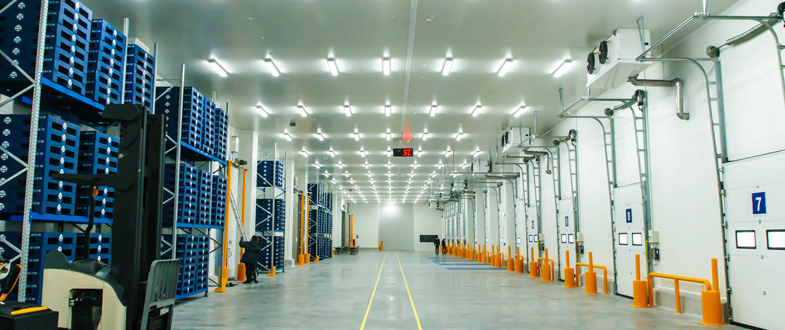Food Storage and Distribution Is Going To Change Dramatically

Food Industry Shifts Under Surge in Online Demand
Coronavirus has led to a surge in demand for grocery delivery services, as the country attempts to slow the spread of the disease.
There is a huge impact and need for cold storage solutions accelerated by the adoption of food delivery services. There is a surge in demand by customers for perishable and frozen foods, which were previously much less popular for delivery.
Within the storage industry, it is crucial that you store your products with particular care and consideration. This arguably requires even more thought when it comes to food storage. Although this isn’t a simple task, failure to do so can result in significant problems such as food spoilage and can subsequently affect future operations.
Here are five common problems with warehouse food storage to consider especially when dealing with the cold storage and distribution of perishables:
Incorrect Temperature Control
What can cause this to happen? Many things, such as doors not being appropriately sealed in temperature-controlled areas, subsequently allowing warm/cold air to enter which can create unwanted temperature changes. Another cause leading to incorrect temperature control is air not being correctly distributed as a result of a blocked ventilation system. Or even something as simple as freezers not working correctly. It is important to endeavor to make sure your warehouse is checked to maintain correct temperatures.
Improper Sanitation Procedures
In food storage warehouses, it is particularly important to practice personal hygiene and training, as well as thorough warehouse sanitation, with detailed procedures. Whether it’s cutting corners due to increased pressure to meet deadlines or loaded schedules, both often result in sanitation procedures being skipped in an attempt to save time. Make sure your warehouse sanitation schedule is practiced consistently, and personal hygiene levels and procedures are maintained. Failure to do so can result in wastage, (from producing contamination), making those ‘time-saving’ compromises not so time-saving after all.
Insufficient Storage Capacity
Capacity utilization and warehouse optimization is essential. However, it is particularly crucial for warehouses used for cold food storage. Inadequate and incorrect storage can lead to food spoilage and wastage. Additionally, insufficient capacity and inventor control can result in damage to property as well as your business reputation. Whether you have in-house procedures or use a automated storage solution, it is essential to have an outlined plan of action to tackle the problem.
Distribution Logistics Visibility
Certain food products should not be kept near each other. Automation will increase in cold storage facilities to efficiently fulfill orders and make up for a shortage of workers willing to work in the extreme conditions of these facilities. This will prompt higher-density, greater-height and smaller-footprint buildouts that will be required for around-the-clock operations to load distribution trucks and transport food.
Product Rotation
Expiry dates, sell-by dates and shipping dates in the food industry contribute to thorough product rotation in the warehouse. FIFO which stands for first-in, first-out, is the typical product rotation method used that ensures that the first products in are the first to go out, eliminating spoiled food waste, making a good product rotation practice essential in a cold food storage warehouse.
Sunvera is uniquely positioned to address the oncoming challenges and issues faced by the companies dealing with the packaging, storage and distribution of perishable items with limited shelf lives.
We have been working with several companies in the food storage and distribution space in delivering state of the art custom applications for managing the round the clock productivity.


Sunvera’s mobile storage solutions and custom applications for cold storage warehouse management is helping food growers and distributers increase their operational efficiency with fleet optimization, delivery routing and inventory visibility.





© 2022 Sunvera Software. All Rights Reserved.

